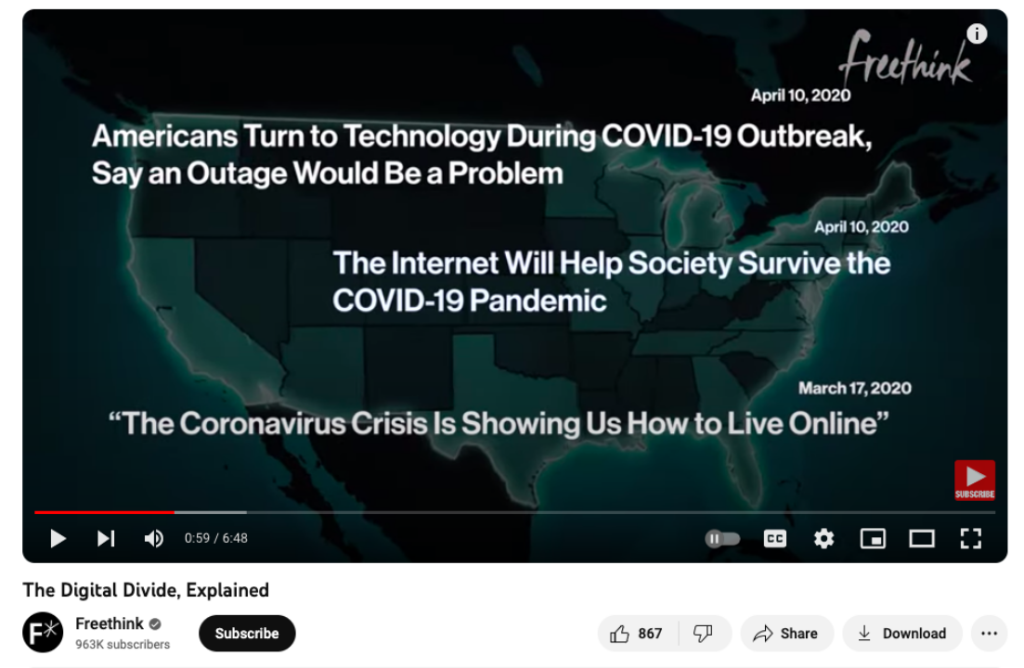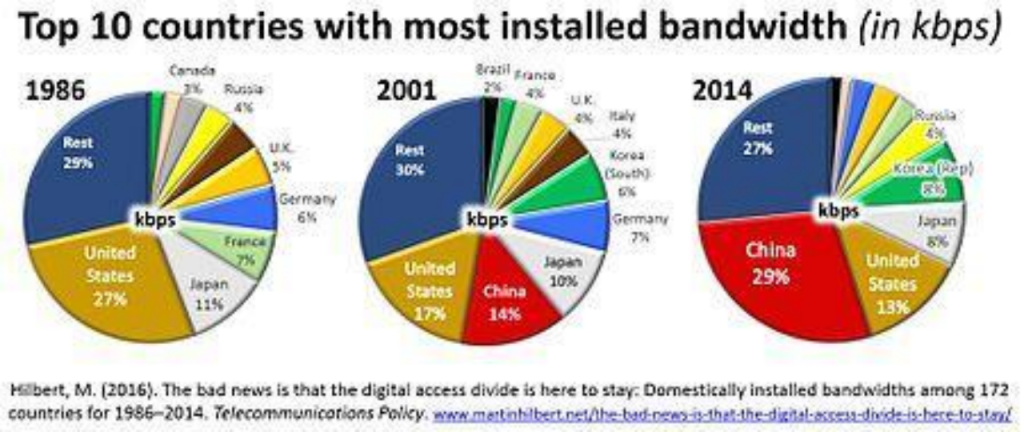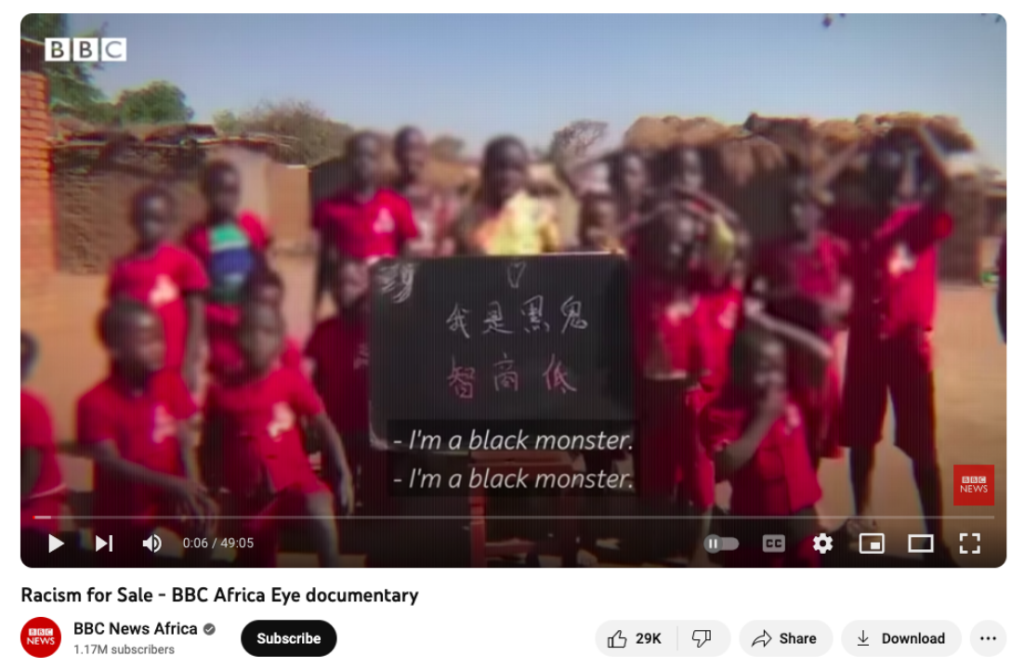Introduction
The allure of digital platforms across the world for all communities lies in their promise of universal access in an increasingly digitalised world. Digital platforms present themselves as a democratising force, seemingly bridging gaps and connecting people across borders (Van den Berg et al., 2020). However, this may only be the surface-level understanding of the affordances that digital platforms provide. Thus, a deeper look at the ways they function and how people may or may not be able to make use of the platforms reveals deeper truths about the issue of inclusion and proper representation in these platforms. In light of these arguments, this essay takes a look at three important issues connected to digital inclusivity to highlight that digital platforms are, in fact, widening the gap between the haves and the have-nots. These components are the myth of ‘us,’ the marginalization of the Global South, and the insidious presence of platformed racism in the context of Indigenous communities to showcase how the idea of high inclusivity and connectivity through digital platforms is a myth.
The Myth of ‘Us’
The idea that the world is connected due to digital platforms and has become a huge global village has been around for many years now. This is what gave rise to the idea of everyone being a big family, which Couldry (2015) terms the myth of ‘us.’ The author talks about the essential aspect of the digital divide and how the idea that the world, which has people of many different backgrounds, has become an ‘us’ is a flawed concept. Thus, it can be noted that the idea that everyone has an equal seat at the virtual table is exciting, yet the reality is starkly different. Access to digital platforms often hinges on socioeconomic status, geographic location, and education levels (Bonina et al., 2021). As a result, a substantial portion of the global population remains excluded. Ever since the early days of the conception of the internet, the promise that digital platforms will be a great equalizer has been made, however, the reality is far from it (Van Dijk, 2020). The digital divide persists, where, on one side, the developed nations have the option of high-speed internet while it remains a luxury in developing countries. For example, during the Covid-19 pandemic, there was an apparent divide between developed and underdeveloped areas in the amount of information they received through digital platforms or the complete lack of information for rural areas. This is also discussed in the video below, which dedicates a whole section to discussing the digital divide during the pandemic. This lack of access to digital platforms, the gap between rural and urban areas and the inclusivity issue that comes from economic status are all big proofs of how the digital divide continues to exist, and the idea that the internet is all-inclusive is a myth.
The Digital Divide explained video: https://youtu.be/aMi3ky04XqY.

Marginalisation in Global South Communication
The digital divide is more than an inconvenience for countries of the Global South where it is actually a systematic issue. Language barriers, inadequate infrastructure, and poor resource distribution can lead to insurmountable challenges (Medrado & Rega, 2023). The authors highlight that digital literacy is frequently a requirement for access to healthcare, economic opportunities, and education, further lagging behind marginalized people. This leads to the understanding that in many parts of the Global South, the lack of digital infrastructure is a significant barrier to inclusivity with the rest of the world. Poorly developed or non-existent internet networks restrict access to essential services and information.

Source: https://images.app.goo.gl/KvuFyc5UuCqLUfJb9
Figure 1, which comes from research on the digital divide, illustrates the lack of proper digital infrastructure in the countries of the Global South. Throughout the years, the chart indicates that the countries with the most installed bandwidth all highlight developed countries, with countries from the Global South presumably grouped together under ‘rest.’ The most recent year, 2014, showcases China as having the most installed bandwidth at 29% while the the ‘rest’ is at 27%, which is a glaring look at how marginalized the Global South is when it comes to internet and digital media access. This image highlights the idea of marginalization in communication in the Global South, which is being highlighted in this section.
Platform Racism in Indigenous Communities
Lastly, it is very important to look at the issue of platform racism, especially against Indigenous communities, because this is one area where the promise of inclusivity through digital mediums falls short. This racism compounds existing inequalities, leading to the erasure of Indigenous cultures and the perpetuation of harmful stereotypes (Matamoros-Fernández, 2017). The author identifies three main ways in which almost all digital platforms inadvertently promote racism against marginalized communities such as Indigenous people. The three components are algorithmic bias, content moderation and systematic bias. A widespread problem that can harm marginalized communities, particularly Indigenous populations, is algorithmic prejudice in social media platforms. These biases appear when certain groups or ideas are marginalized while others are favoured by the algorithms used to curate and promote information (Zajko, 2021). This was noted by Horton (2022) in a report that states that Indigenous films struggled for a long time against algorithms on digital platforms, which did not push them as much as commercial mainstream films. The continuation of damaging perceptions about Indigenous cultures is a result of algorithmic prejudice. For instance, an algorithm can perpetuate preexisting biases and preconceptions if it frequently favours information that represents Indigenous people negatively or stereotypically.
Platformed Racism Video: https://www.youtube.com/watch?v=I0DJlSqlmEw&ab_channel=BBCNewsAfrica

Content moderation is also a huge issue when it comes to misrepresentation and underrepresentation of minority communities like Indigenous people, which pushes them further into the hole of digital separation and division from the rest of the world. Indigenous groups’ right to free speech and the preservation of their cultures are violated when content related to them is unjustly banned. It may deter native people from posting their knowledge, experiences, and tales online (McMillan, 2020). User reports, which may be motivated by bias or prejudice, can also have an impact on content moderation systems. As a result, censorship may be further exacerbated by native content being reported and subsequently removed without sufficient scrutiny. Lastly, systematic bias also plays a role in pushing Indigenous communities and other minorities to the darker side of the digital divide. Digital platforms frequently exhibit systemic bias because of their Western-centric orientation, which favours information, languages, and viewpoints from Western cultures, and this bias promotes colonial narratives and marginalizes Indigenous cultures (Siapera & Viejo-Otero, 2021). On digital platforms, Indigenous languages and cultures are frequently underrepresented. Indigenous peoples and communities have limited access to information and opportunities due to the absence of support for Indigenous languages.Thus, the supporting evidence and multimedia elements that have been provided showcase that digital platforms are, in fact, widening the gap between the haves and the have-nots.
Counterargument
The counterargument against the findings from the exploration of the sources and the multimedia elements discussed above is:
Although the digital gap is an urgent issue, it is important to acknowledge the beneficial effects of digital platforms in terms of promoting global connectivity. The way we communicate and share information has certainly changed as a result of these platforms, which enable connections and new levels of collaboration among individuals from different backgrounds. Through this, they have helped people from different cultures communicate and understand one another across borders. While it can be difficult for marginalised populations, such as Indigenous tribes, to use these platforms, they have the ability to make effective use of them by using them to share their distinctive cultures and stories with the world. Therefore, despite their flaws, digital platforms have the potential to overcome communication gaps while fostering greater diversity and dialogue on a global level.
References:
Bonina, C., Koskinen, K., Eaton, B., & Gawer, A. (2021). Digital platforms for development: Foundations and research agenda. Information Systems Journal, 31(6), 869-902. https://doi.org/10.1111/isj.12326
Couldry, N. (2015). The myth of ‘us’: digital networks, political change and the production of collectivity. Information, Communication & Society, 18(6), 608-626. https://doi.org/10.1080/1369118X.2014.979216
Horton, A. (2022) ‘It’s a completely new day’: the rise of Indigenous films and TV shows. The Guardian. https://www.theguardian.com/culture/2022/sep/02/its-a-completely-new-day-the-rise-of-indigenous-films-and-tv-shows
Matamoros-Fernández, A. (2017). Platformed racism: The mediation and circulation of an Australian race-based controversy on Twitter, Facebook and YouTube. Information, Communication & Society, 20(6), 930-946. https://doi.org/10.1080/1369118X.2017.1293130
Medrado, A., & Rega, I. (2023). Media Activism, Artivism and the Fight Against Marginalisation in the Global South: South-to-South Communication. Taylor & Francis. https://books.google.co.in/books?hl=en&lr=&id=Cqi3EAAAQBAJ&oi=fnd&pg=PT9&dq=Medrado,+A.,+%26+Rega,+I.+(2023).+Media+Activism,+Artivism+and+the+Fight+Against+Marginalisation+in+the+Global+South:+South-to-South+Communication.+Taylor+%26+Francis.&ots=j6jeh-OaxK&sig=hSCJDNk4_uc0lMydCe6I9Ilmg14&redir_esc=y#v=onepage&q=Medrado%2C%20A.%2C%20%26%20Rega%2C%20I.%20(2023).%20Media%20Activism%2C%20Artivism%20and%20the%20Fight%20Against%20Marginalisation%20in%20the%20Global%20South%3A%20South-to-South%20Communication.%20Taylor%20%26%20Francis.&f=false
Siapera, E., & Viejo-Otero, P. (2021). Governing hate: Facebook and digital racism. Television & New Media, 22(2), 112-130. https://doi.org/10.1177/1527476420982232
Van den Berg, A. C., Giest, S. N., Groeneveld, S. M., & Kraaij, W. (2020). Inclusivity in online platforms: Recruitment strategies for improving participation of diverse sociodemographic groups. Public Administration Review, 80(6), 989-1000. https://doi.org/10.1111/puar.13215
Van Dijk, J. (2020). The digital divide. John Wiley & Sons. https://books.google.co.in/books?hl=en&lr=&id=6DvKDwAAQBAJ&oi=fnd&pg=PT7&dq=Van+Dijk,+J.+(2020).+The+digital+divide.+John+Wiley+%26+Sons.&ots=6AsMzKSgvC&sig=va6-9zIX8v7FdnkOkKzWLKWVc8g&redir_esc=y#v=onepage&q=Van%20Dijk%2C%20J.%20(2020).%20The%20digital%20divide.%20John%20Wiley%20%26%20Sons.&f=false
Zajko, M. (2021). Conservative AI and social inequality: conceptualizing alternatives to bias through social theory. AI & Society, 36(3), 1047-1056. https://doi.org/10.1007/s00146-021-01153-9